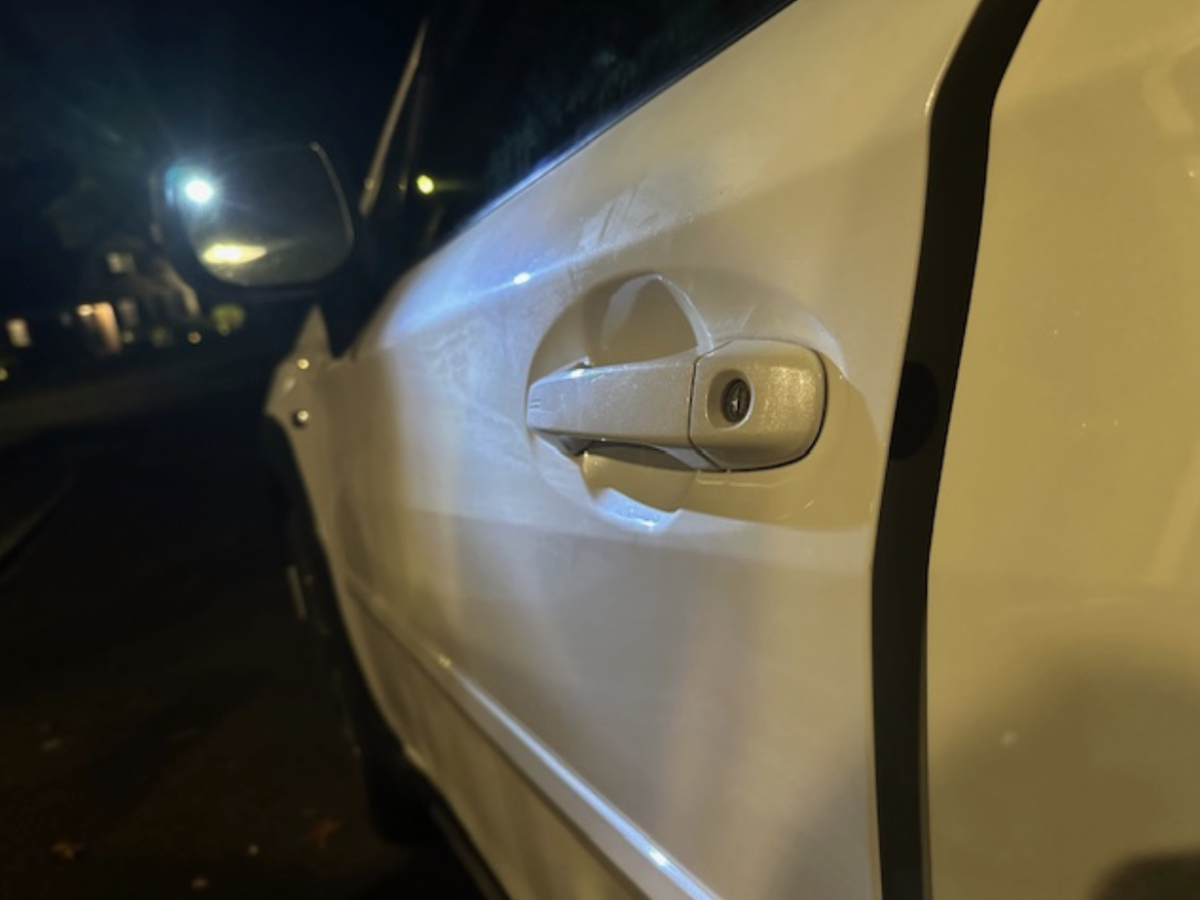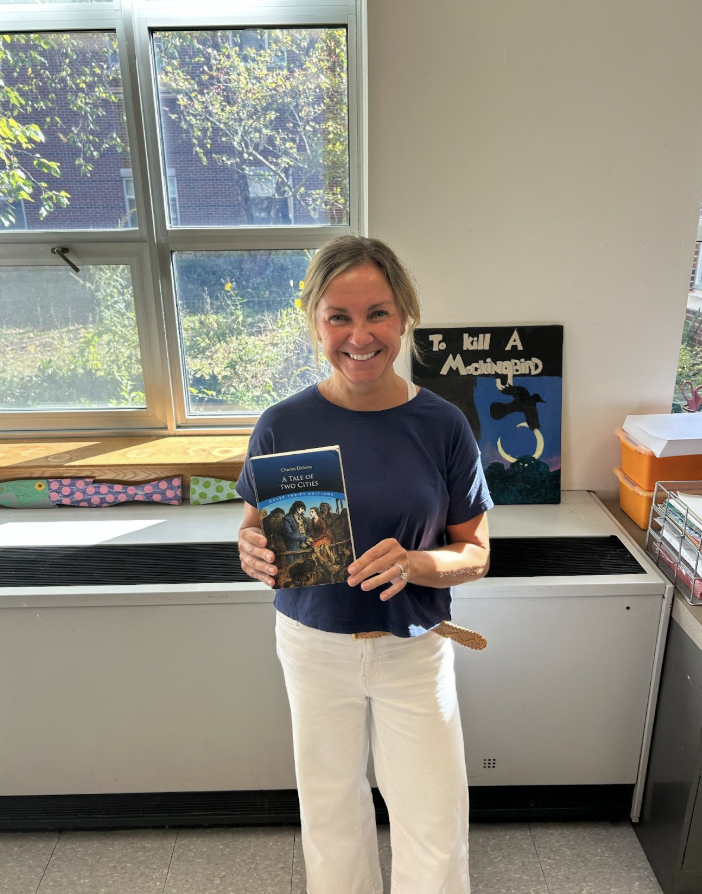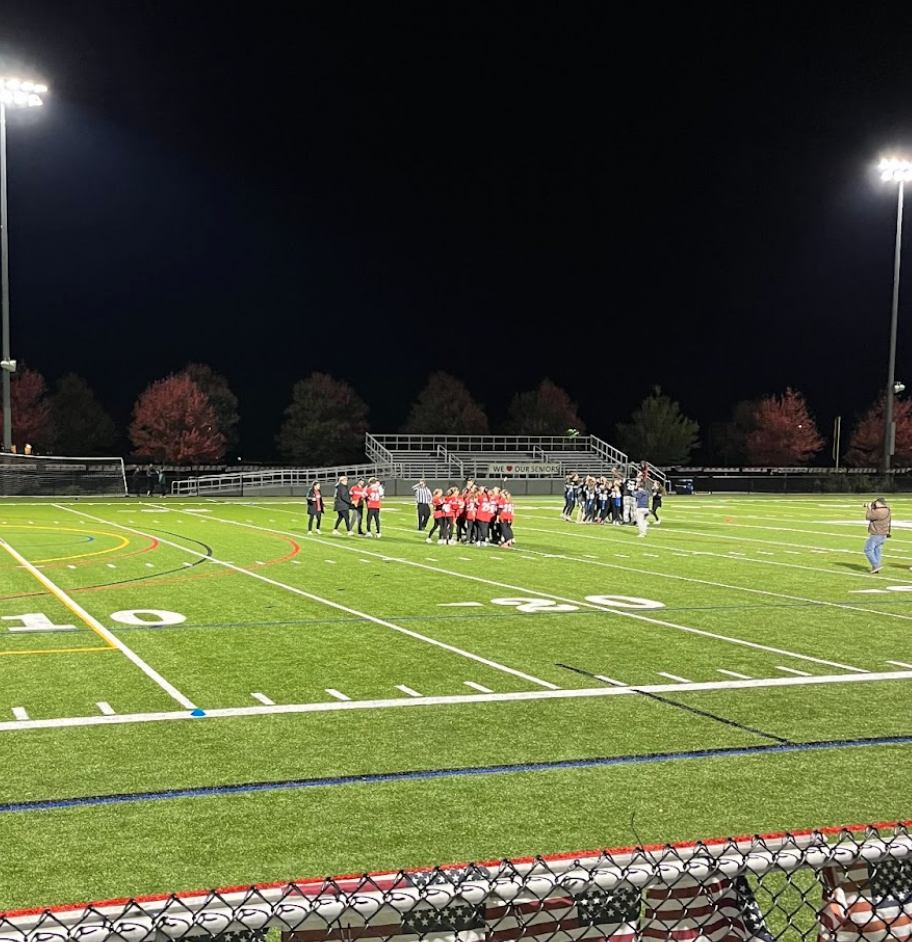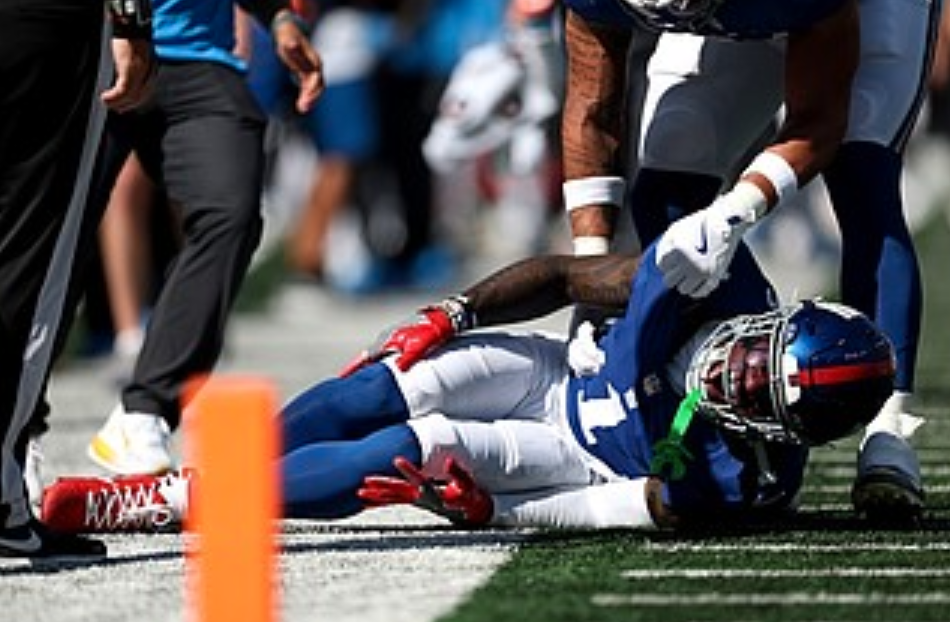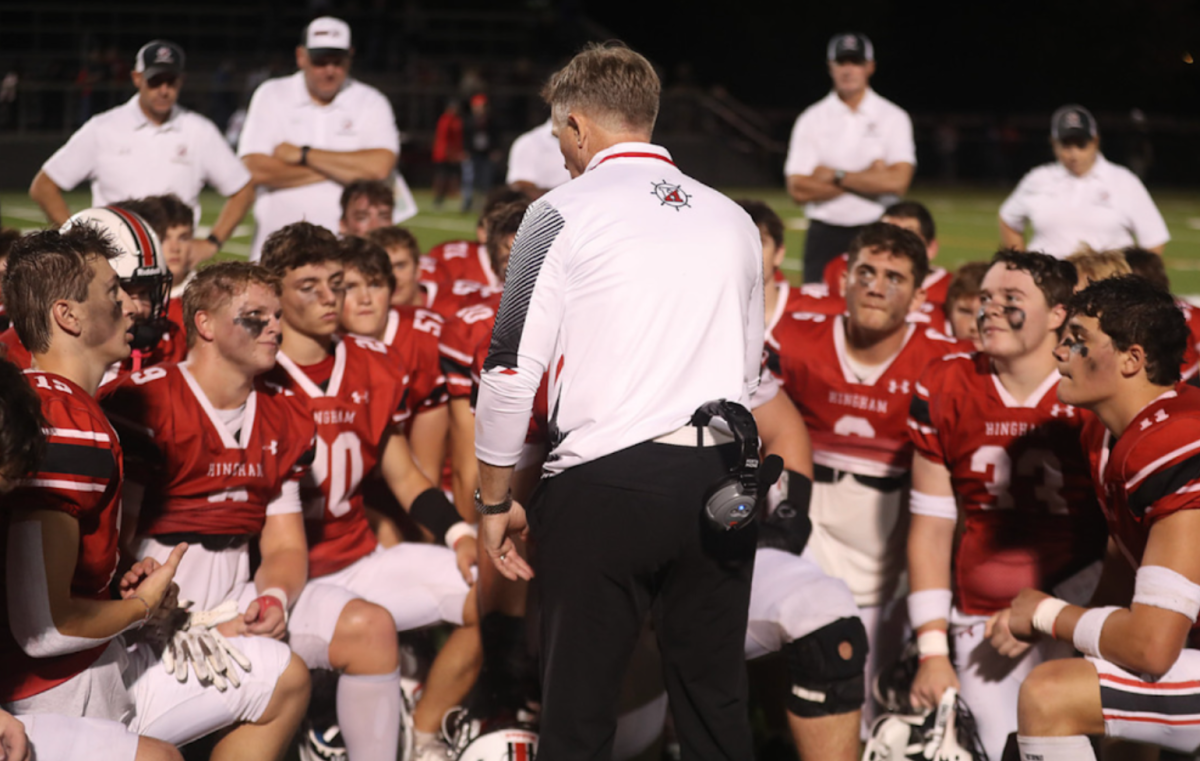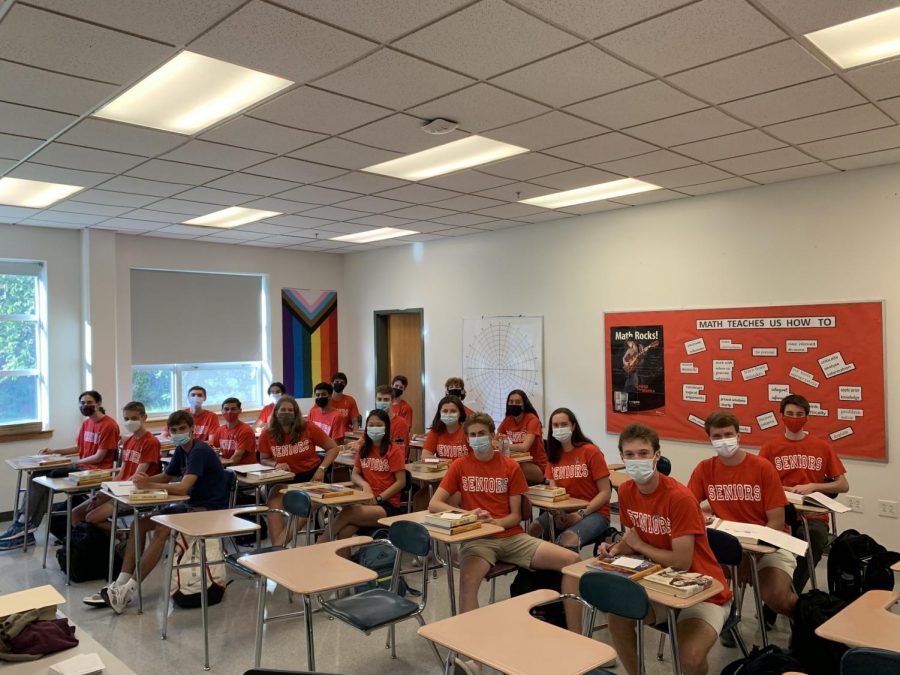The Mask Policy Leaves the Student Body Divided
Since the first day of school, masks have been required for everyone inside the school building.
October 31, 2021
At Hingham High School, all students must wear masks indoors, except for the cafeteria at lunchtime. Students are also permitted two extra minutes added to their passing time between B and C block to give a mask break. These policies have been in place since the start of the school. The opinions of students and staff differ drastically on them.
After interviewing several students and listening to conversations heard in several classrooms, two opinions appeared predominant. The first is that, while the masks are helpful, vaccines are more effective, and wearing masks currently can be considered excessive. The second is that this mandate is crucial and keeps students safe. This article seeks to elaborate on both of those opinions through more in-depth student quotations.
Senior Ella Niehoff states that “I do not like the mask rule.” She then goes on to explain three reasons behind that opinion.
“I think it’s unreasonable and the rules don’t make sense. First, we have to wear them all day except for lunch where we sit together and are spreading COVID germs. Second, we see our teammates at sports practice without masks and we are free to socialize with them normally from giving them a hug to a high five. Third, I have been told that the student body has reached 80% vaccination, which is enough for the school to legally end the use of masks at HHS.”
Niehoff’s concerns are not unfounded. A significant trend in the opinions of students revolved around lunch. The fact that lunch is neither distanced nor requires masks, a policy that would be impossible to enforce considering students are eating, the use of masks in regular classroom situations seems futile. If the school trusts that in a packed, mostly indoor lunchroom, COVID will not spread, yet believes that it will in less crowded classrooms, there is reason to be concerned.
Senior Maddie Eikinas offered a differing opinion from Niehoff. She stated that “I like the maks. I haven’t gotten sick at all this year.” Moreover, she adds, “Wearing masks is also an extra precaution for protecting families and people who are high risk.” Eikinas offers a valid point to be concerned about. Masks, while often seeming inconvenient, are always a safety measure. Perhaps the student body should move to a place where masks are not required, but students can choose to wear them out of comfort. This could eliminate some animosity toward the policy, while still allowing cautious students to feel safe. Students and teachers will know more about the direction of the mask policy in November, so students and teachers should keep a lookout for that.
Senior Emily Conroy offers an approach that speaks more toward the waiting game. She states that “I think that it is still important to wear masks until we get the statistics for vaccinated students so that we can better make a decisive decision on whether it is safe to remove the rule for the rest of the year.” Often, this strategy may be the best. Without sufficient data, one can only speculate about the safety of the student body. At this point, students and teachers are at the mercy of the administration to determine what comes next.


